Big congrats for Wenhua’s Faculty of Engineering Graduate Research International Travel Award!! Wenhua will visit Prof. Haris Koutsopoulos’s group at Northwest university, the US for 6 months.
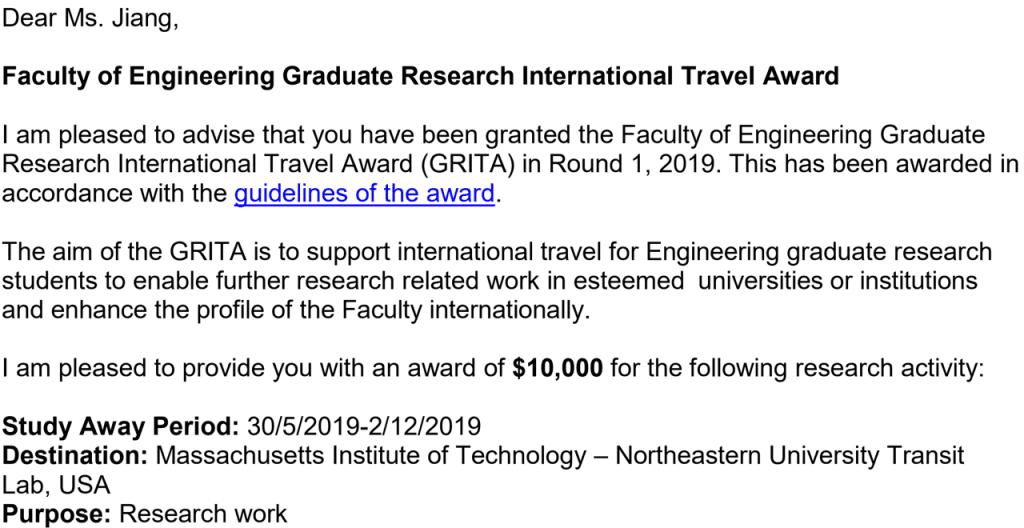
Big congrats for Wenhua’s Faculty of Engineering Graduate Research International Travel Award!! Wenhua will visit Prof. Haris Koutsopoulos’s group at Northwest university, the US for 6 months.

To provide empirical evidence on the relationship between built environment and public sharing bike flow in Suzhou, China.
The study area of this research focuses on Suzhou located in the southeast Jiangsu Province of East China and east about 100 km to Shanghai (Figure 1(A)).
There are around 1,750 bike stations and 40,000 public sharing bikes put into use in Suzhou (Figure 1(B)).

Fig. 1: Study area. (A) Location of Suzhou in China; and (B) the spatial distribution of bike stations, metro stations and population density in urban area of Suzhou.
Data Sources


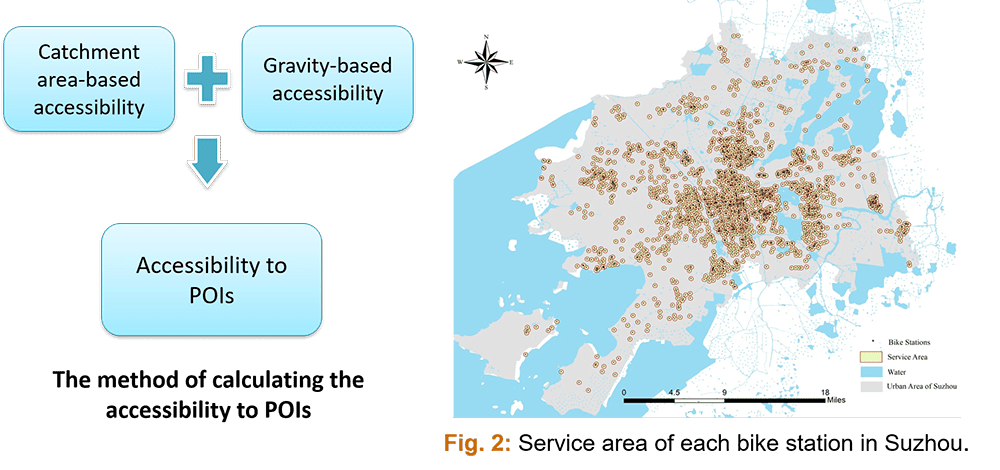
Global Regression

Geographically Weighted Regression (GWR)

GWR is a local regression model. Coefficients are allowed to vary.
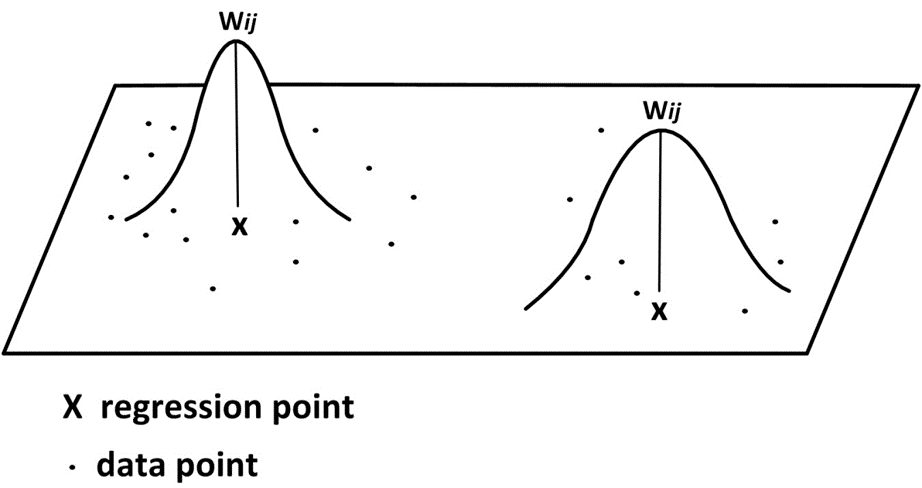
Bi-squared Weighting Function
Global Regression
Table 1: The results of Global Regression.
| Dependent variables | Global Regression | |
| Trips on workdays | Trips on nonwork days | |
| Coeff. (t-value) | Coeff. (t-value) | |
| Intercept | -75.388 (-8.27) | -67.948 (-7.25) |
| Attributes of public bike systems | ||
| Capacity of bike stations | 3.508 (11.88) | 3.372 (11.11) |
| Accessibility to bike stations | 33.441 (14.66) | 27.991 (11.93) |
| Built environment | ||
| Population density | -2.2E-04 (-2.13) | -2.2E-04 (-2.00) |
| Accessibility to metro station | 4.852 (5.83) | 3.803 (4.44) |
| Accessibility to shopping mall | 8.254 (4.23) | 10.003 (4.99) |
| Accessibility to bus station | 6.719 (3.23) | 6.054 (2.83) |
| Accessibility to restaurant | 1.075 (5.82) | 1.491 (7.84) |
| Accessibility to dwelling | 0.544 (0.49) | 0.411 (0.36) |
| Accessibility to local financial services | 11.608 (6.84) | 11.494 (6.59) |
| Accessibility to public leisure and religion place | -3.258 (-2.22) | -0.906 (-0.60) |
| Accessibility to public park | -7.613 (-1.22) | -1.131 (-0.18) |
| Accessibility to educational place | 7.276 (3.83) | 9.130 (4.68) |
| Accessibility to workplace | 5.190 (3.78) | -1.610 (-1.14) |
| R-square | 0.392 | 0.360 |
| Adjusted R-square | 0.387 | 0.355 |
Note: Values in bold are significant at 0.1 level.

Fig. 3: Comparisons of explanatory power of Global regression and GWR.
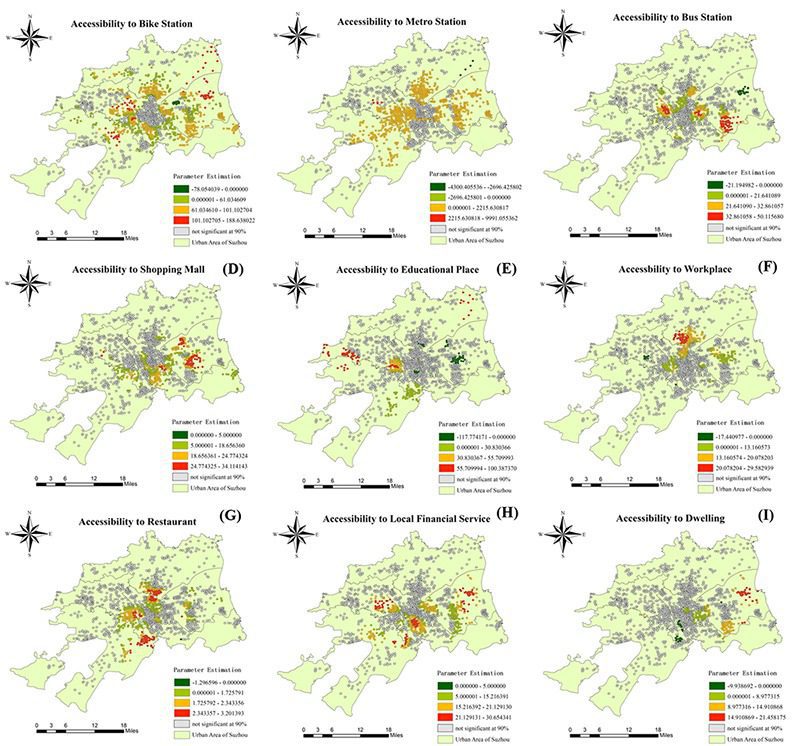
Fig. 4: Spatial distributions of local coefficients on working day and t-value with significance less than 90%.
|
Global Regression |
GWR |
|
The capacity and proximity of bike stations are positively correlated with bike usage. Gravity-based accessibility to metro stations of bike stations may increase bike flow. The bike stations nearby shopping malls, bus stations, restaurants, financial and educational places are also positively correlated with bike usage. Population density has a statistically negative impact on bike usage. |
The effects of built environment are divergent across the Suzhou region. Most of the coefficient appears to have zero or negative value in the central areas of Suzhou (Old Town) while surrounding areas have modest built environment effect on bike flows. |
The goodness of fit in the GWR is better than the global regression model.
This work was supported by Jiangsu Industrial Technology Research Institute and Research Institute of Future Cities at Xi’an Jiaotong-Liverpool University.
For more detailed information please contact our TUPA members below;
Chunliang Wu, [email protected]
Transportation data is of great importance for intelligent transportation system. Missing data problems are inevitable during data collection.
Challenges in existing imputation methods: potential useful information is not efficiently used in the modeling process; methods considering temporal correlation usually assuming that linear relationships exist between observed variables and latent variables; most techniques fail to measure the uncertainty.
This study introduces the use of a self-measuring multi-task Gaussian process (SM-MTGP) method for imputing missing data.
A SM-MTGP method is proposed to combine features from tasks and inputs to measure similarities jointly.
Dependencies of tasks and inputs are explored via covariance functions under SM-MTGP framework.
Correlations between responses are captured to provide additional information for enhancing imputation accuracy.
Brief review of MTGP
Assuming we have \(Q\) tasks and a set of observations \(Y = \left\{ {{y_{i1}},{y_{i2}}, \ldots {y_{iD}}} \right\}, i = 1, \ldots ,Q\), for each corresponding task at \(????\) distinct inputs, where \(????_{????????}\) is the response for \(????^{????ℎ}\) task given the input \(????_????\).
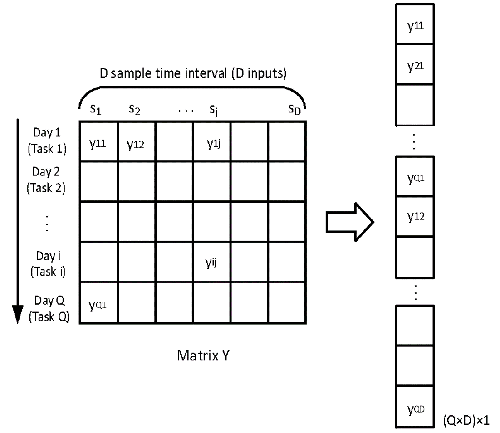
FIGURE 1 Vectorization of matrix Y
When the SM-MTGP model is introduced to the imputation of missing values of transfer passenger flow, the shared information of tasks is considered in terms of the temporal relatedness of various days. Transfer passenger flow over \(Q\) days can be treated as \(Q\) tasks, and the number of sampling time intervals \(D\) per day represents \(D\) distinct inputs. We define a matrix \(Y = \left\{ {{y_{ij}}} \right\}(i = 1,2,…,Q;j = 1,2,…D) \in Q \times D \), where \({{y_{ij}}}\) is number of transfer passengers for the \({i^{th}}\) day (task) on the \({j^{th}}\) time interval (input). By stacking the column vectors of \(Y \in Q \times D \), a \(Q \times D\) dimension vector \({\bf{y}} = vec(Y)\) is obtained (Figure 1).
The MTGP model of \({{\bf{\tilde y}}}\)can be described as Equation (1):
$${{\tilde y}_{ij}} = {m_{ij}} + \varepsilon ,\quad \varepsilon \sim N\left( {0,{\sigma ^2}} \right) \tag{1}$$ where \({m_{ij}}\) is the expected value of the element \({{\tilde y}_{ij}}\), and \(\varepsilon\) is an additive Gaussian noise with variance \({{\sigma ^2}}\).
$$m \sim N\left( {0,{\Sigma _Q} \otimes {\Sigma _D}} \right) \label{TGP} \tag{2}$$ $${\Sigma _Q} = K_Q^fG_Q^m, \quad{\Sigma _D} = K_D^fG_D^m \label{covariance matrix} \tag{3}$$ The covariance matrices \({\Sigma _Q}\) are defined as a product of kernel of days features (tasks) \(K_Q^f\) and the self-measuring kernel \(G_Q^m\), and \({\Sigma _D}\) are defined as a product of the kernel of time intervals features (inputs) \(K_D^f\) and self-measuring kernel \(G_D^m\).
$${K_Q^f} = k\left( {{y_i},{y_j}} \right) \in \mathbb{R}^{Q \times Q}, \quad {G_Q^m} = g\left( {{y_{i:}},{y_{j:}}} \right) \in \mathbb{R}^{Q \times Q} \tag{4}$$ $${K_D^f} = k\left( {{y_h},{y_l}} \right) \in \mathbb{R}^{D \times D}, \quad {G_D^m} = g\left( {{y_{:h}},{y_{:l}}} \right) \in \mathbb{R}^{D \times D} \tag{5}$$ where \(k\left( {{y_i},{y_j}} \right)\) and \(k\left( {{y_h},{y_l}} \right)\) indicate covariances of features of \({i^{th}}\) day and \({j^{th}}\) day, and covariances of features of \({h^{th}}\) time interval and \({l^{th}}\) time interval, respectively. Similarly, \(g\left( {{y_{i:}},{y_{j:}}} \right)\) and \(g\left( {{y_{:h}},{y_{:l}}} \right)\) measure covariances of self-measuring observations of \({i^{th}}\) day and \({j^{th}}\) day, and covariances of self-measuring observations of \({h^{th}}\) time interval and \({l^{th}}\) time interval.
By following the principle of MTGP, the joint distribution of \({\tilde Y}\) can be described as Equation (6), where \(\Phi = {\Sigma _Q} \otimes {\Sigma _D} + {\sigma ^2}{\bf{I}}\).
$$\int {p\left( {\tilde Y|M,0,{\sigma ^2}} \right)} p\left( {M|{\Sigma _Q},{\Sigma _D}} \right)dM = N\left( {{\bf{\tilde y}}|{\bf{0}},\Phi } \right) \tag{6}$$ Using a Gussian process framework given the observed number of transfer passengers, the unobserved passenger flows in \(Y\) can be derived by predictive equation (7). $$E[{{\tilde y}_{ab}}|{{{\bf{\tilde y}}}_{obs}},{\Sigma _Q},{\Sigma _D}] = \left( {{\Sigma _{{Q_a}}} \otimes {K_{{D_b}}}} \right)_{obs}^T\Phi _{obs}^{ – 1}{{{\bf{\tilde y}}}_{obs}} \tag{7}$$ where \({\Phi _{obs}} = {\bf{P}}\Phi {{\bf{P}}^T} \in \mathbb{R}^{M \times M} \) is a covariance matrix over the observed transfer passenger flows in \(Y\), \({{\Sigma _{{Q_a}}}}\) denotes \({a^{th}}\) column vector in \({\Sigma _Q}\), which measures the similarities between \({a^{th}}\) day and all the other days among \(Q\) days, and \({{K_{{D_b}}}}\) indicates \({b^{th}}\) column vector of \({K_D}\), which represents covariance between \({b^{th}}\) time interval and all the remaining time intervals of \(D\) samples.
Data analysed includes 6-months of passenger flow data collected by WiFi sensors at Richmond railway station (Figure 2), Melbourne, Australia.
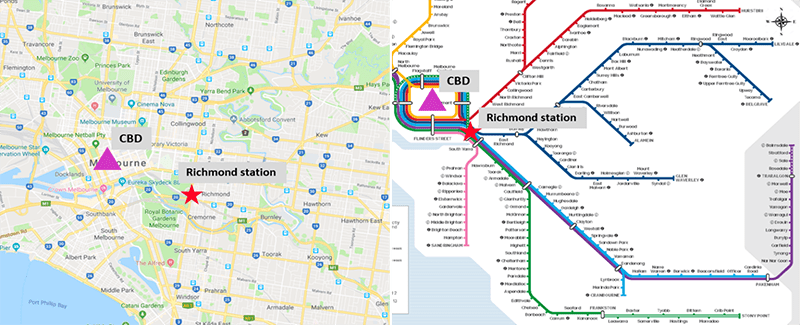
FIGURE 2 Map of location and train lines of Richmond station.
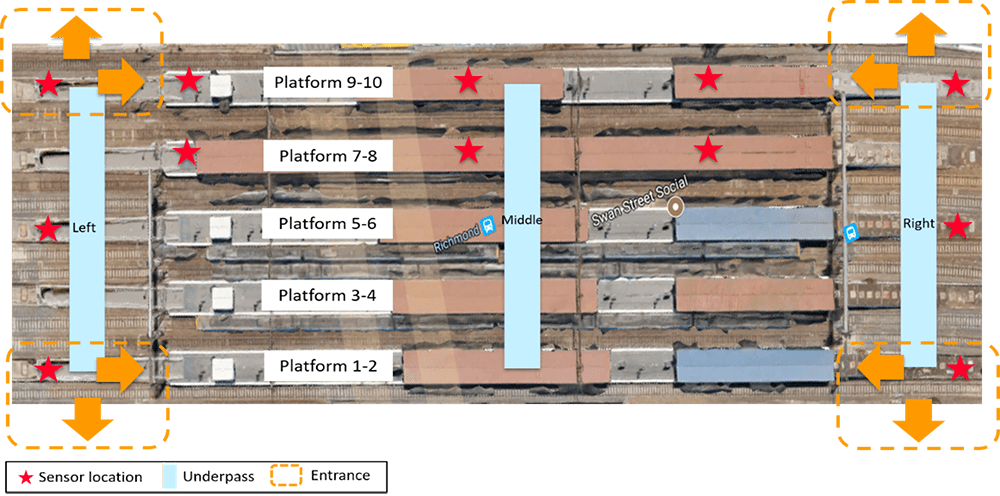
FIGURE 3 Map of 12 WiFi sensors distribution.
The deployed 12 sensors are distributed at platforms 7-10 and two sided underpasses (Figure 3).
Figure 4 indicates the RMSE results of discrete missing pattern with various algorithms. The improvements in RMSE by SM-MTGP is around 60% for three different missing rates.
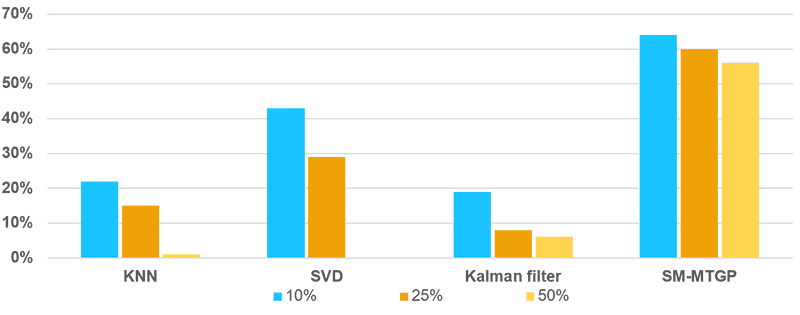
FIGURE 4 RMSE Results for Different Missing Ratios of Discrete missing data.
Three mixed missing patterns under different missing ratios are reported (Figure 5-7). The SM-MTGP method is still able to obtain better performance compared with all the other methods, leading to improvements in RMSE up to 60%.

FIGURE 5 RMSE Results for Different Missing Ratios of Mixed Missing Data
with One Random Day Missing.
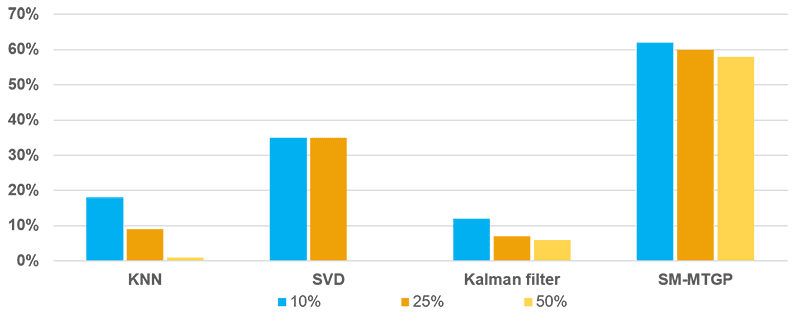
FIGURE 6 RMSE Results for Different Missing Ratios of Mixed Missing Data
with Two Random Day Missing.

FIGURE 7 RMSE Results for Different Missing Ratios of Mixed Missing Data
with Four Random Day Missing.
Imputation accuracy can achieve around 60% improvement in RMSE in all the tested missing scenarios compared with the base model.
SM-MTGP significantly outperforms other methods under the large missing ratio.
On-going research on incorporating other features into this algorithm to make application on large-scale transit network and simplifying model computational complexity.
For more detailed information please contact our TUPA members below;
Wenhua Jiang, [email protected]
The Transportation Research Board (TRB) 98th Annual Meeting will be held January 13–17, 2019, at the Walter E. Washington Convention Center, in Washington, D.C.
Two PhD students(Wenhua Jiang and Chunliang Wu) and Three Masters students(Yan Xia, Huamei Zhu and Ning Xu) presented their research outcomes at TRB. Very well done, especially those from Joint Masters Program.
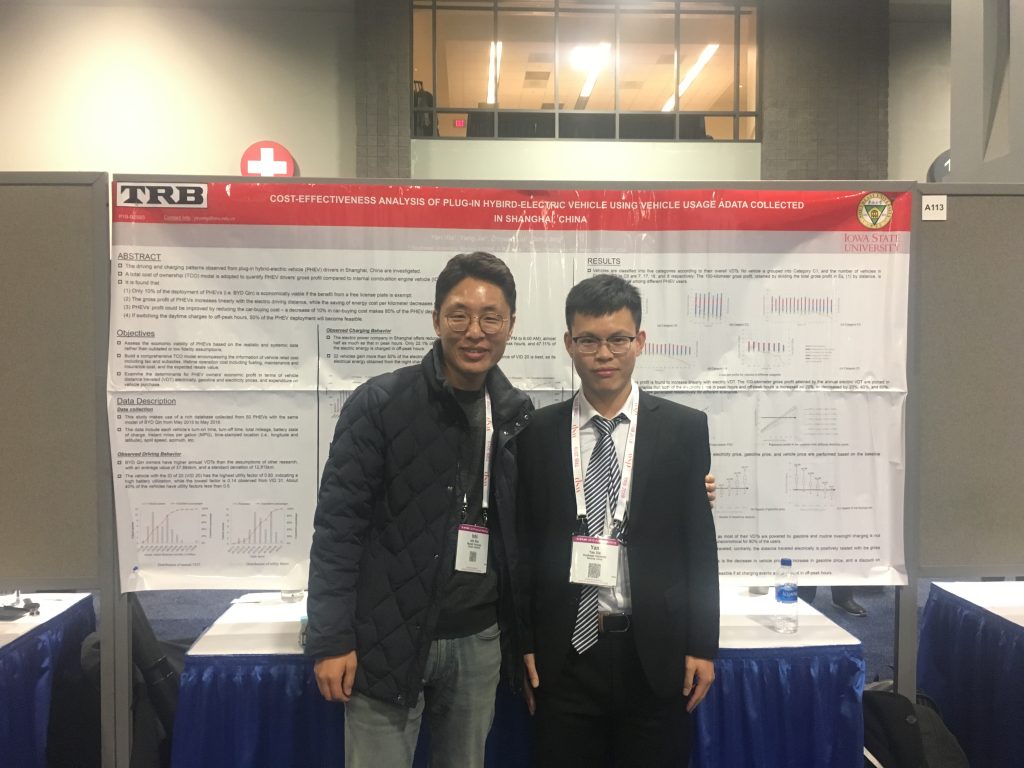
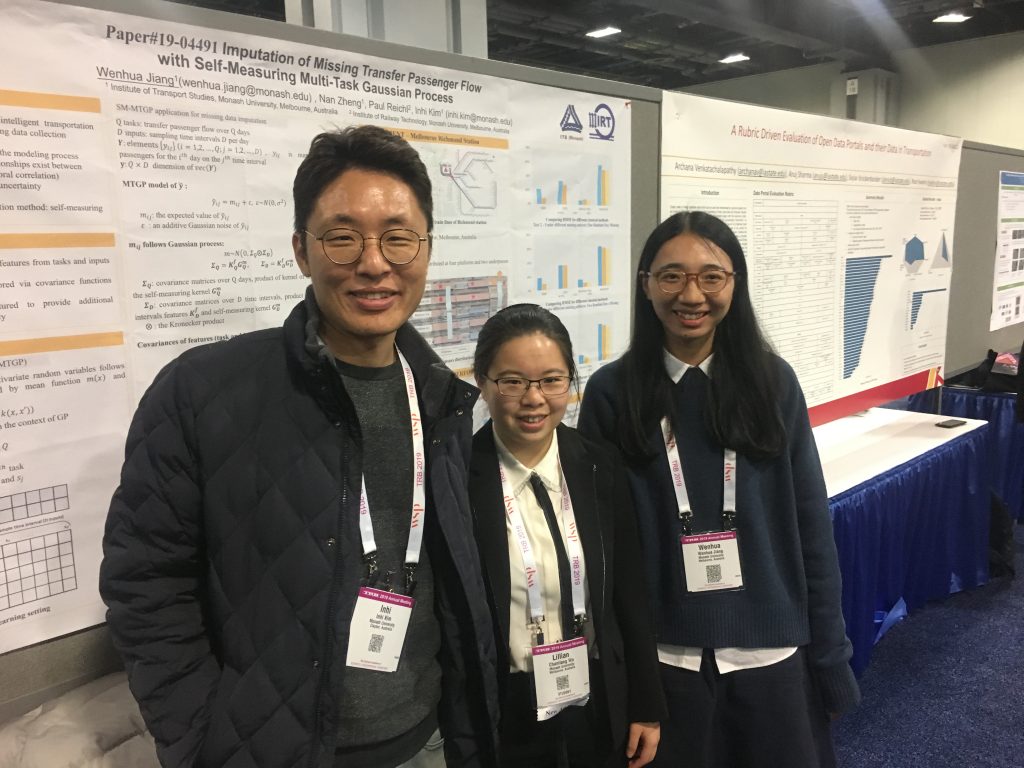
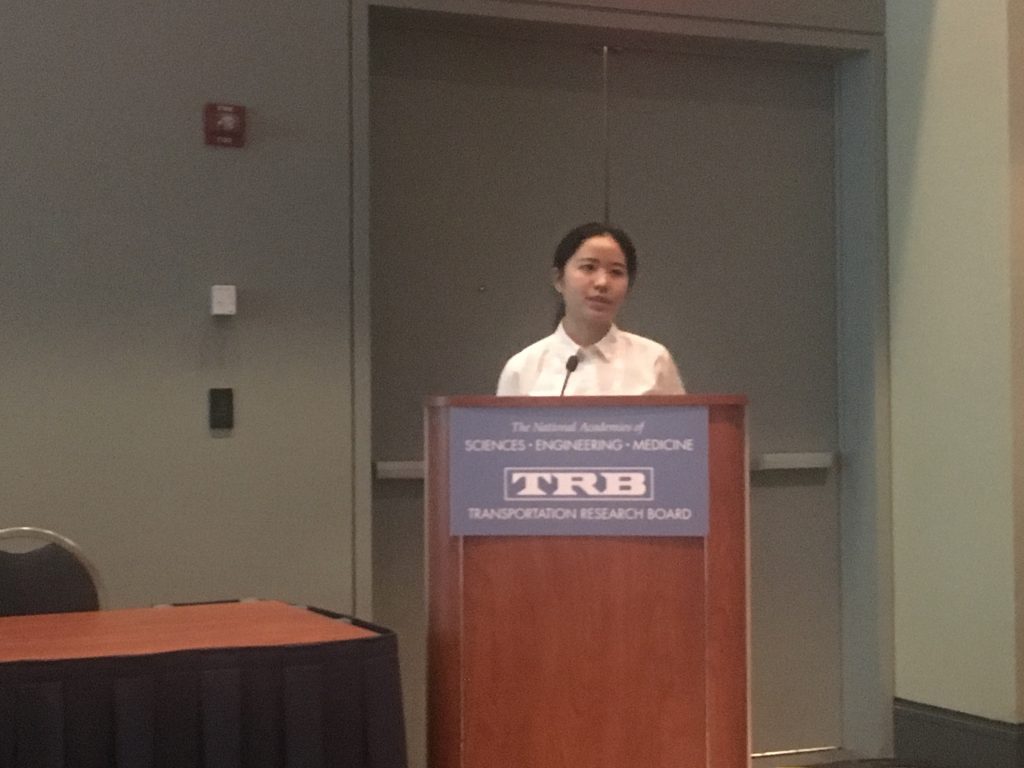

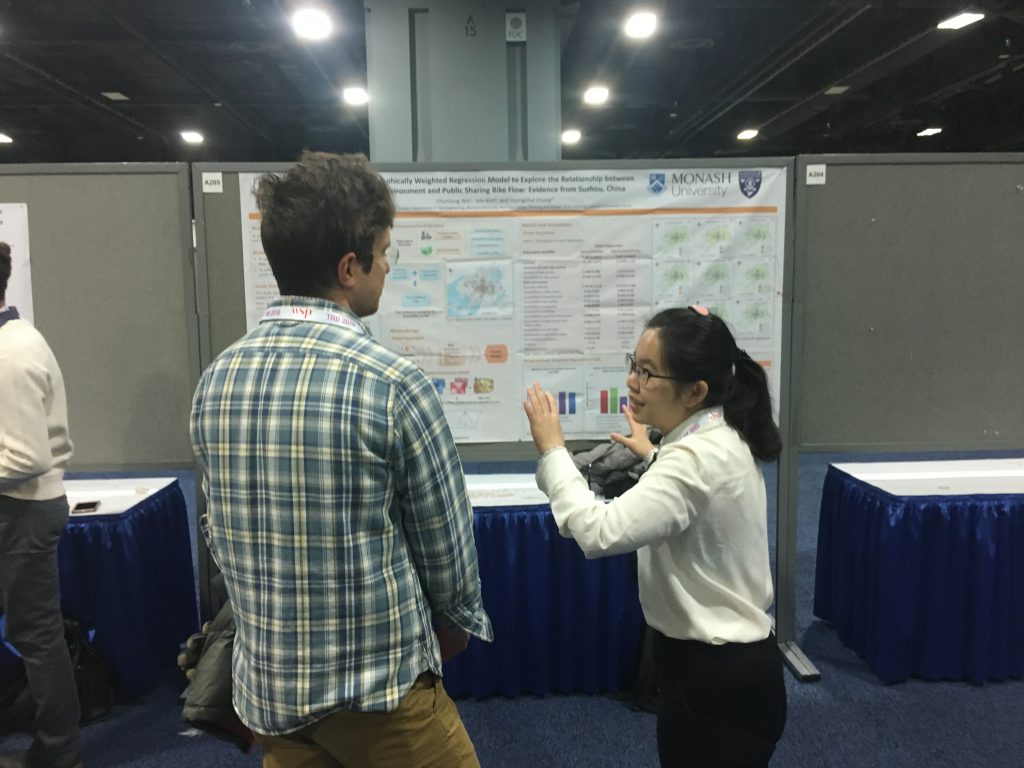
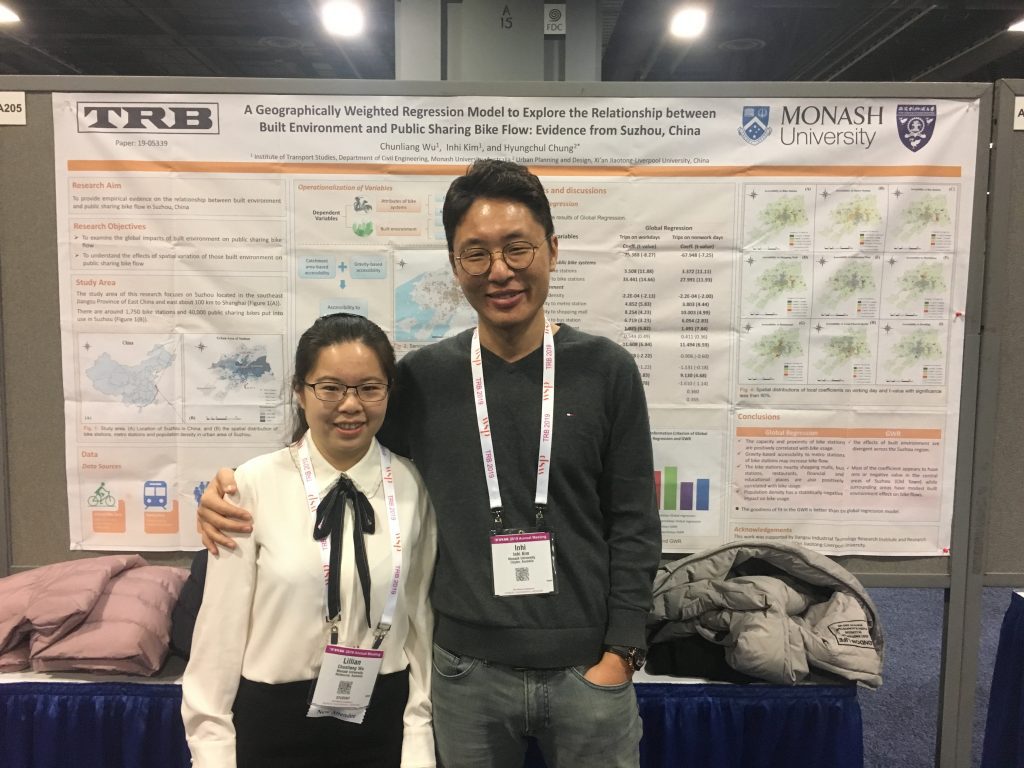
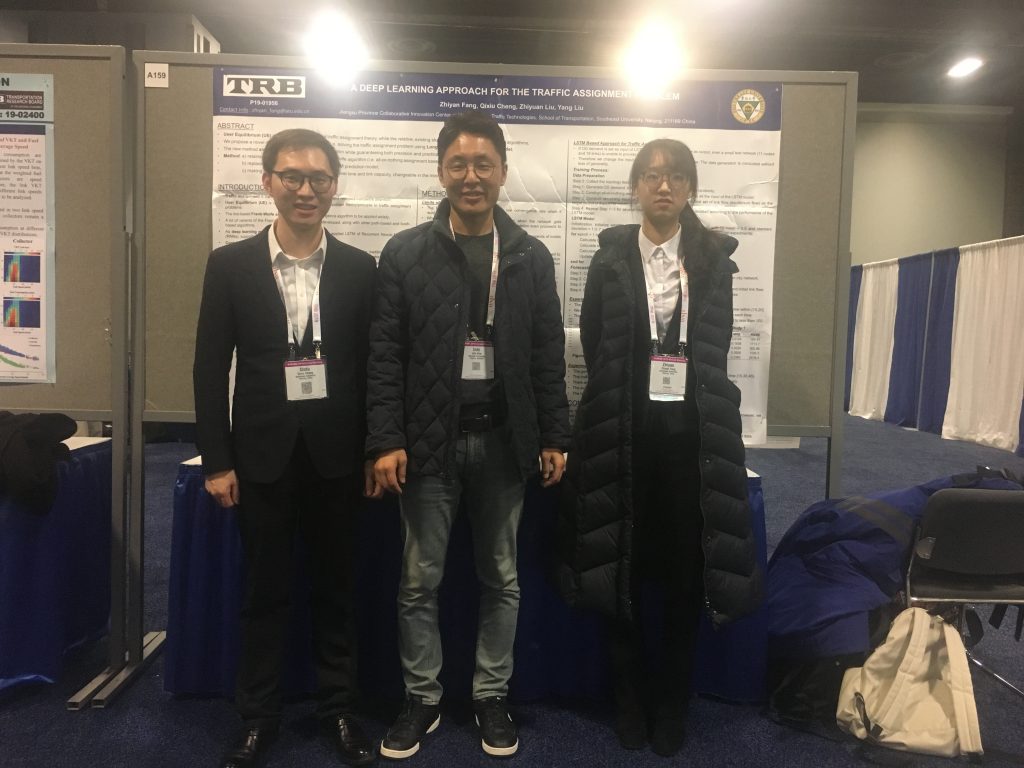
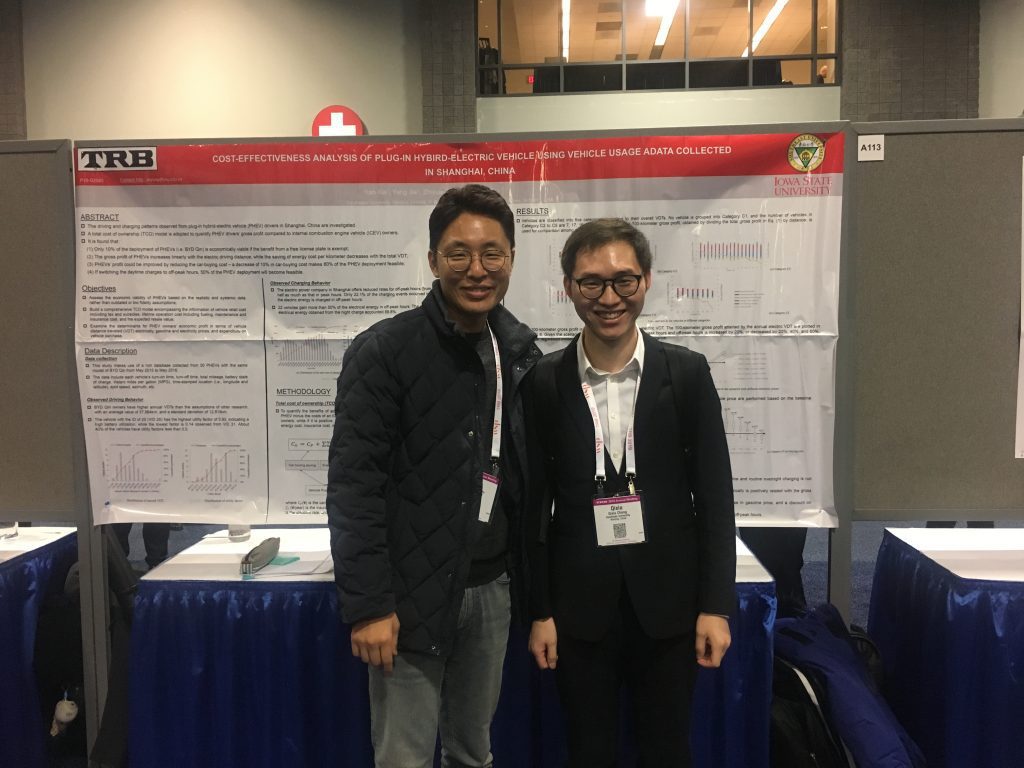

The latest subject rankings released through the the Centre of World University Rankings (for 2017) puts Monash in first place in the transportation field:
https://cwur.org/2017/subjects.php#Transportation
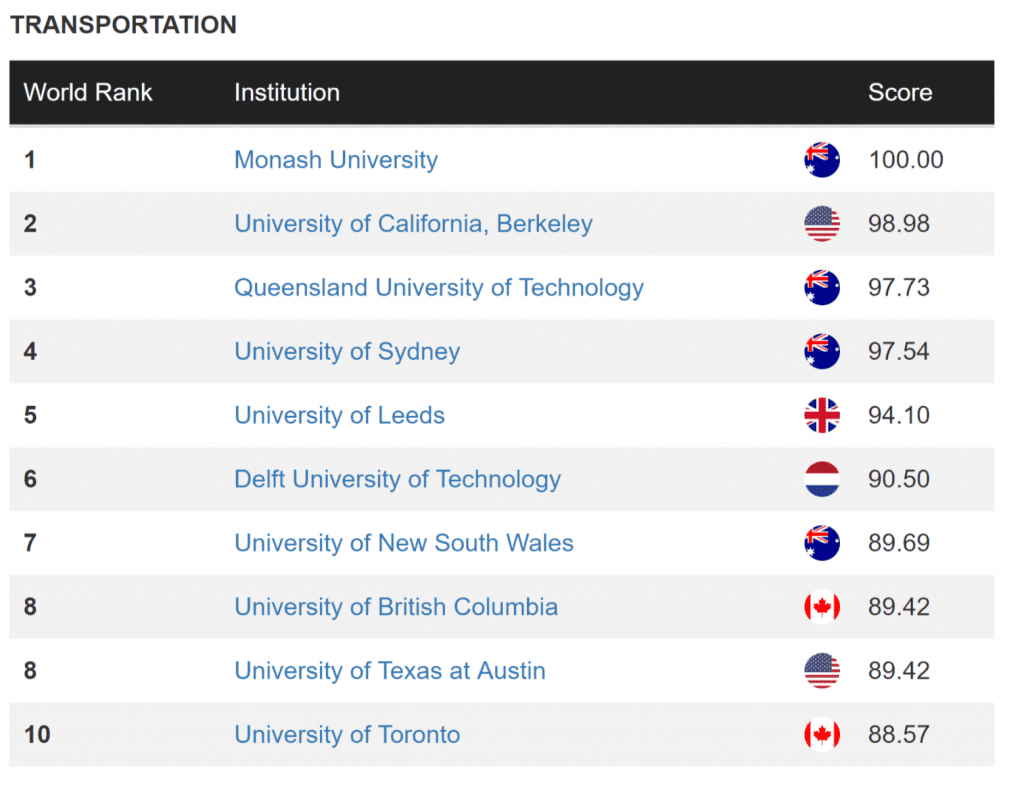
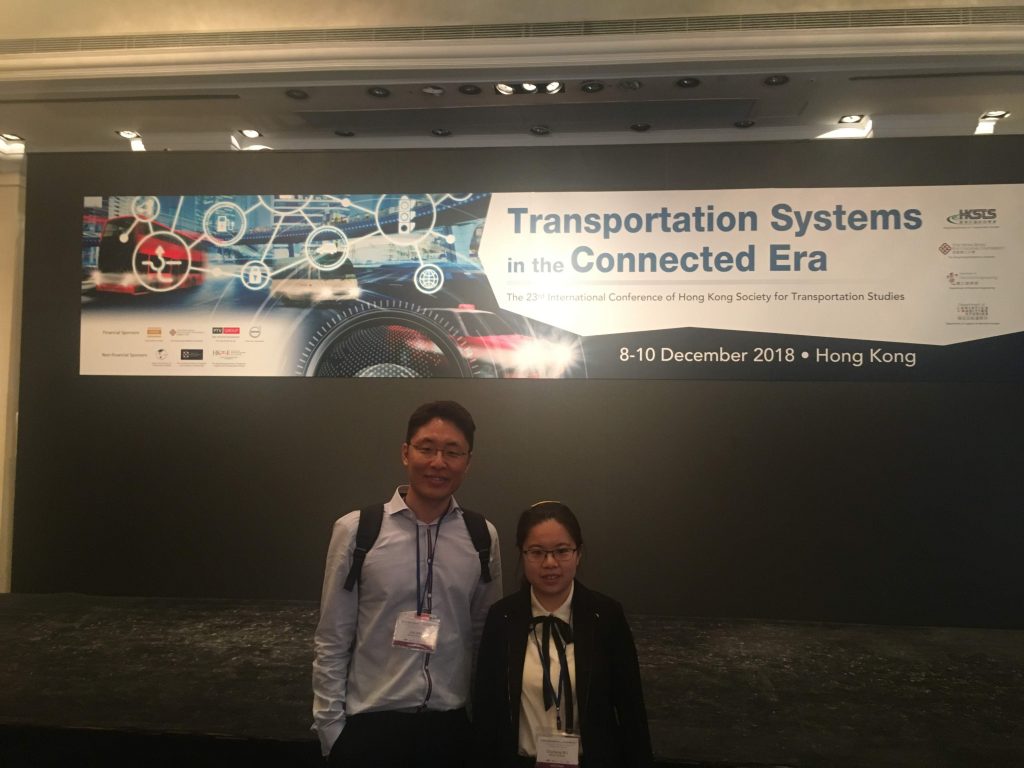

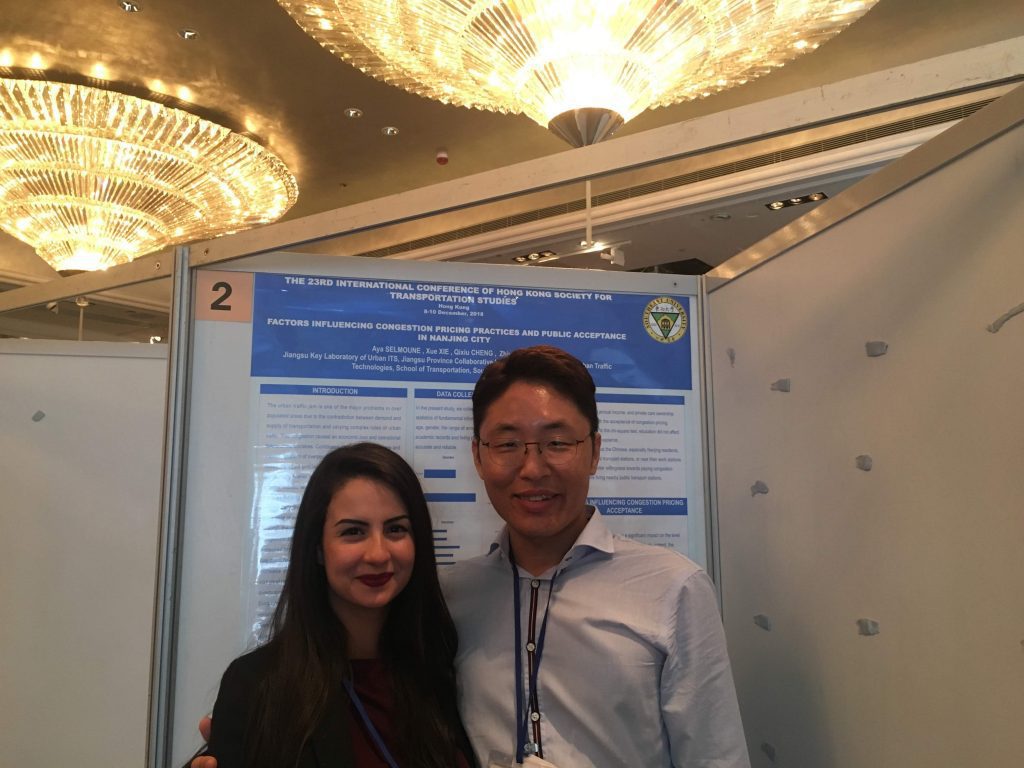
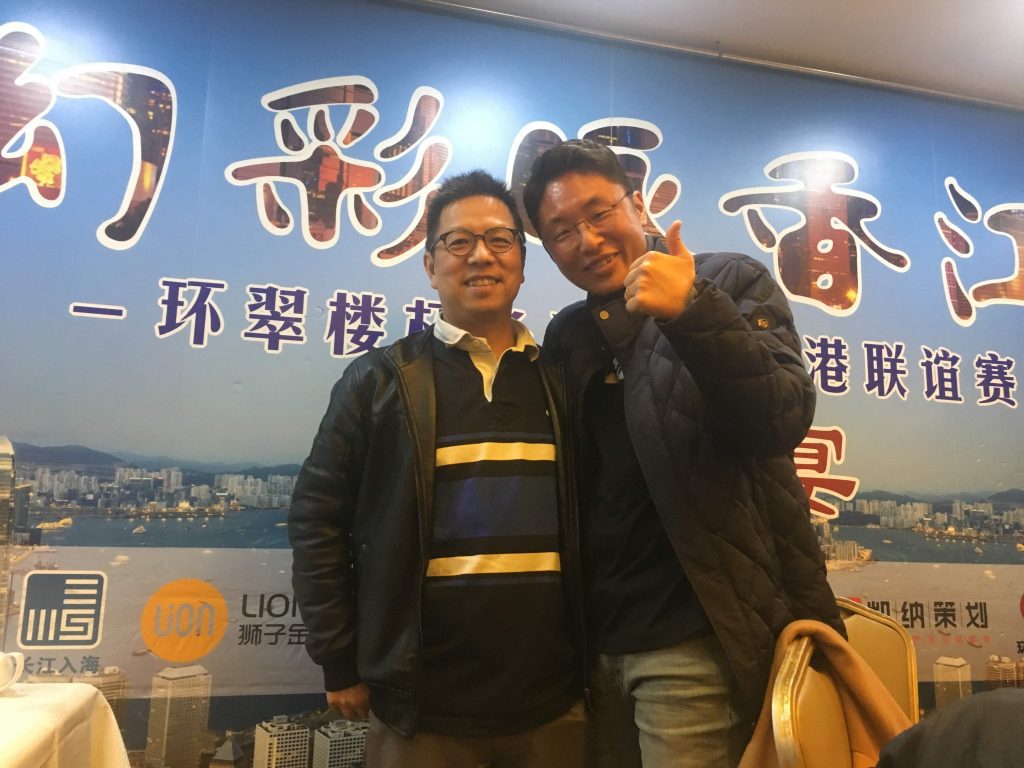

I am very glad that Tianqi Gu has been passed the mid-review. His research topic is “Inter Relationship between Shared Bike System and Mass Transit considering Traffic Condition” supervised by Prof. Graham Currie, and me. The chair (Prof. Geoff Rose) and the pannels (Dr. Nan Zheng and Dr. Ye Lu) were served for this event. Congratulation Tianqi and keep it up!!
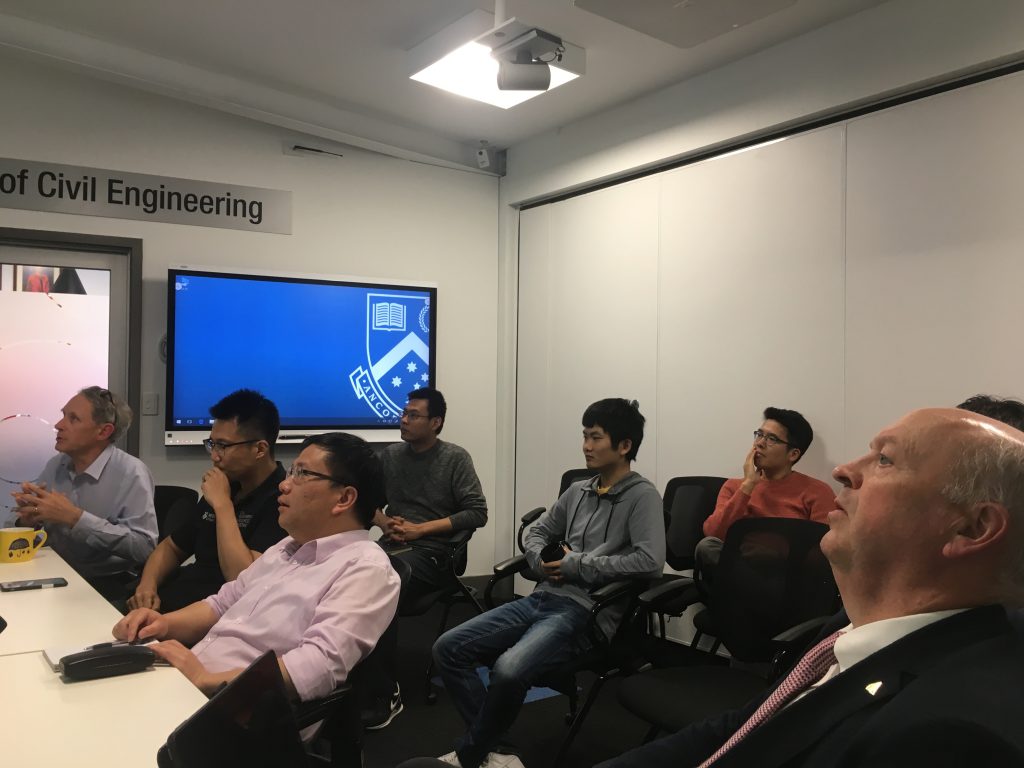

Monash ITS welcomes Prof. Bart van Arem from Delft University of Technology, The Netherlands giving a speech to transport lovers at State Library in Melbourne.
Driverless vehicles and the future of urban transport: Beyond the Hype
Melbourne faces a considerable challenge to maintain its much celebrated livability in the face of population growth. Transport is critical and smart solutions are needed. Autonomous or driverless vehicles are regularly promoted as the ‘solution’ to a wide range of urban transport challenges. Will we sleep walk into an urban mobility future defined for us by the driverless vehicle industry or make conscious choices about the role that advanced technology should play in creating a transport system to support the type of city we want Melbourne to become? This year’s Ogden Transport Lecture looks beyond the hype and draws insight from international research to put driverless vehicles and the future of urban mobility under the microscope.
Professor Bart van Arem has an international reputation for research that focuses on analysing and modelling the implications of intelligent vehicles. Bart is Director of the TU Delft Transport Institute and a Professor in the Department Transport & Planning, Faculty of Civil Engineering and Geosciences, Delft University of Technology in the Netherlands. He has held previous appointments at the University of Twente and in TNO, the Netherlands Organisation for Applied Scientific Research.

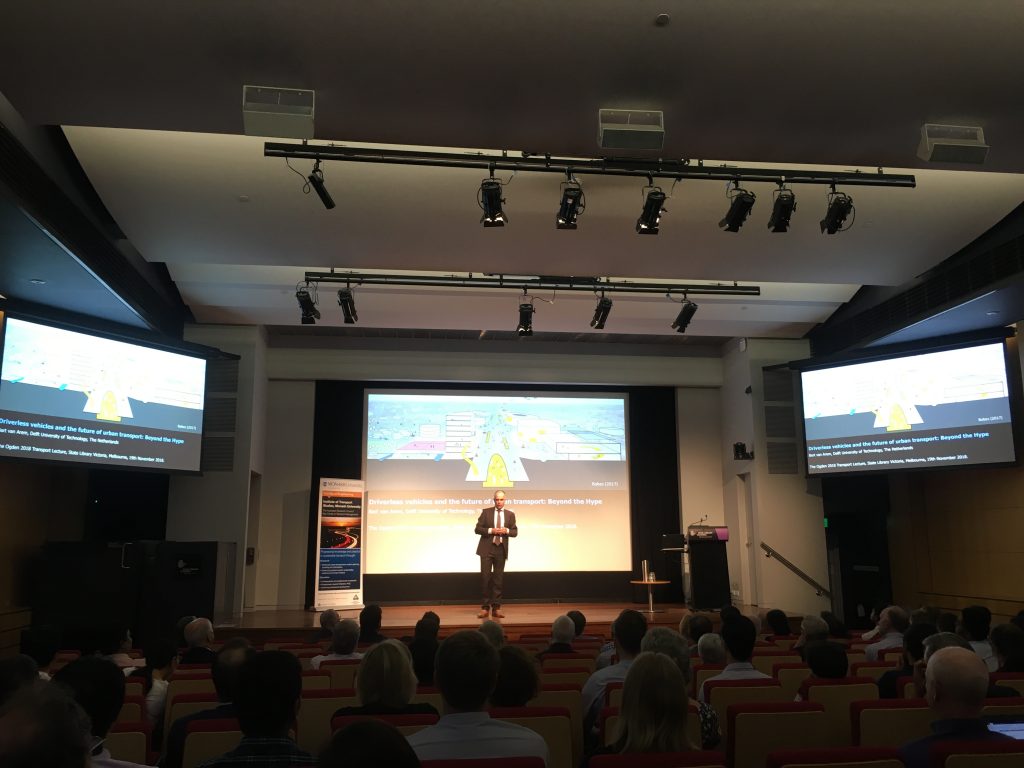
© 2025 TUPA. All rights reserved.